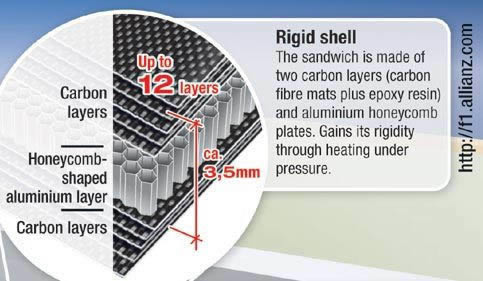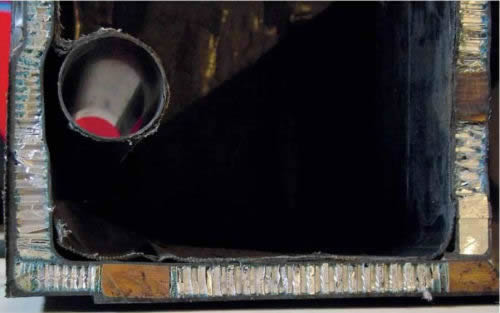Hi.
As i underestand it, modern "Carbon fibre and honeycomb composite structure" consists of relatively thick aluminium honeycomb center layer and two outer layers of carbon fibre "skins", like in the ilustration. How much the carbon fibre parts is responsible for the general crashworthiness of the structure? I belive that using honeycomb aluminium chassis with aluminium skins was pioneered by Lotus at the end of 70s. Did the "revolutionary" Mclaren MP4/1 with carbon fibre chassis have monocoque similar to one from Lotus 78 but with carbon fibre skin, or it had some more fundamental differences?














